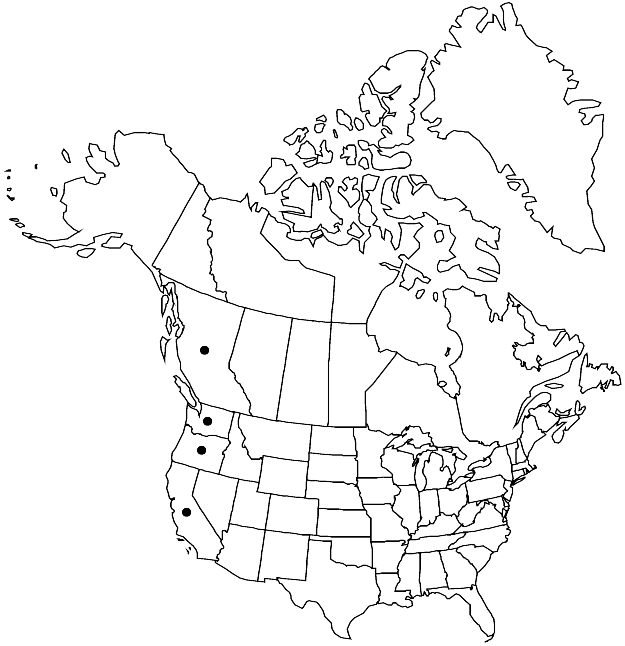Rosulabryum gemmascens
Novon 19: 399. 2009.
Plants small, green, brown, or red-green. Stems 0.5–2 cm, distinctly singly rosulate, innovations elongate, evenly foliate. Leaves of fertile rosettes and innovations differentiated; rosette leaves irregularly twisted to contorted when dry, erect-spreading when moist, broadly ovate to obovate, flat, 1–2.5 mm; base not decurrent; margins recurved to mid leaf, entire or weakly serrulate distally, limbidium absent or weak, of 1 row of cells; apex acute; costa not reaching apex to excurrent, awn pigmented or hyaline, slender, irregularly twisted when dry; proximal laminal cells long-rectangular; medial and distal cells long-rhomboidal, 12–20 µm wide, 3–5: 1, walls thin, porose; innovation leaves redbrown, somewhat twisted to weakly imbricate when dry, broadly lanceolate to ovate, concave, 0.5–1.5 mm, awn present, short, pigmented to sometimes hyaline. Specialized asexual reproduction rarely by gemmae in distal leaf-axils, brown, finely papillose, and rhizoidal tubers, usually on long rhizoids away from stem base, orange-red to red, brighter than rhizoids, (60–) 100–200 µm, smooth or almost so. Sexual condition dioicous. Capsule inclined to nutant, brown to redbrown, cylindric, 2–5 mm.
Phenology: Capsules mature Apr–Jun.
Habitat: Exposed to shaded soil, soil over rock, rotting wood
Elevation: low to moderate elevations (0-1000 m)
Distribution

B.C., Calif., Oreg., Wash.
Discussion
Rosulabryum gemmascens is closely related to R. capillare, but differs in the unusual evenly foliate red-brown innovations, leaves not spirally twisted around the stem, very weak or absent limbidium, and almost entire distal margins. The species is endemic to coastal areas, and is especially common in Mediterranean climate areas of California.
Selected References
None.
Lower Taxa
"narrower" is not a number."height" is not a number."narrow" is not a number."um" is not declared as a valid unit of measurement for this property.
